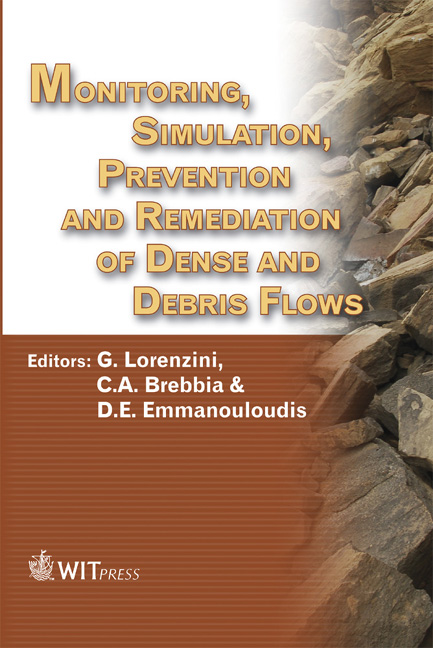Hyper-concentrated Flows In Tributaries Of The Middle Yellow River
Price
Free (open access)
Transaction
Volume
90
Pages
10
Published
2006
Size
634 kb
Paper DOI
10.2495/DEB060341
Copyright
WIT Press
Author(s)
H. Hashimoto, H. Takaoka & S. Ikematsu
Abstract
The purpose of the present study is to examine resistance rule and sediment transport characteristics of hyper-concentrated flows in tributaries of the middle Yellow River. The Kuye, Dali, Tuwei and Jialu Rivers are selected as the study area. Laboratory experiments of hyper-concentrated flows are made in an open channel, using silt and sand as flowing material. Field data of flow and sediment discharge of the rivers are obtained. The sediment-water mixture flow model proposed by Hashimoto and Hirano is found to be valid for the hyper-concentrated flows in the Kuye River and laboratory experiments with fine sand. Keywords: Yellow River, hyper-concentrated flow, flow resistance, sediment transport. 1 Introduction The Yellow River basin has serious problems of flood and irrigation due to hyper-concentrated flows from the tributaries of the middle river reach (Wan and Wang [5]). In order to solve these problems, it is important to estimate flow resistance and sediment transport in the hyper-concentrated flows. There are some works on these subjects (e.g. Wan and Wang [5] and Mantz [6]). However, the less model can explain satisfactorily flow resistance and sediment transport. The purpose of the present study is to find a flow model for flow resistance and sediment transport characteristics in the hyper-concentrated flows. The Kuye, Dali, Tuwei and Jialu River are selected as the study area (Fig. 1). We visited the Kuye and Dali River in 2002. First we investigate characteristics of bed sediments in these rivers. Second, we make laboratory experiments of hyper-concentrated flows in an open channel, using silt and sand as flowing material.
Keywords
Yellow River, hyper-concentrated flow, flow resistance, sediment transport.





